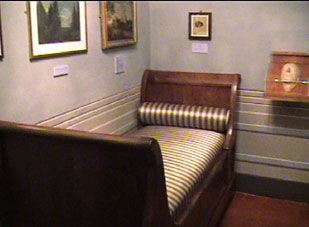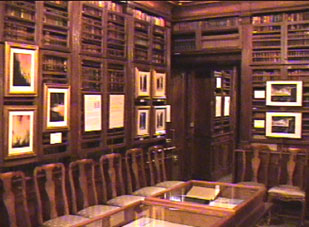
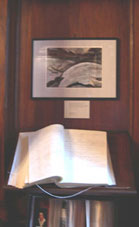
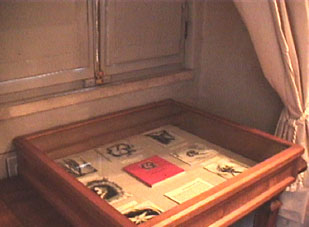
Related books
Italian language translation with original English text.
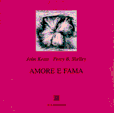
John Keats Percy B. Shelley
Book cover and drawings by Nancy Watkins
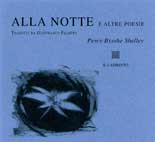
Percy Bysshe Shelley
Book cover and drawings by Nancy Watkins

Nancy Watkins
The publisher:
Il Labirinto
www.labirintolibri.com
The Poet's Room Nancy Watkins Keats-Shelley Museum Piazza di Spagna 26, Rome, Italy |
|
from The Poet's Room exhibition catalogue
Duality: Painting The Poet’s
Room
An Inside Interview
Nancy Watkins
Why The Poet’s Room?
The Poet’s Room has long been a theme of mine—a
painting in my first solo exhibition years ago was called The Poet’s
Room—and I love the idea of exhibiting this series in the
very rooms where Keats briefly resided and died. As Baudelaire says
in his prose-poem of this name, the poet inhabits a ‘Two-fold
Room’. It has been my special privilege to catch firsthand glimpses
of the ordinary, everyday room in the act of its transformation into
the extraordinary one of poetry. The most seemingly everyday circumstance—Keats
walks outside and sits under a nearby tree—and off he is, on nightingale’s
wings, near and far in pithy musings. Italian catches this dual room
perfectly; the very word for room is ‘stanza’! Strangely
enough, I recently read that in Shakespeare’s and even in Keats’s
time, ‘Rome’ was pronounced ‘room’. So Keats
had a room in Room...
But you are a painter, not a poet.
Art and poetry are kin. At their best, I see them as a sort of intersection
of two ideal lines. One of the lines is vertical—it points upward,
uplifting the soul, feeding it with visions of beauty and the sublime.
To quote Schumann and Kandinsky, the role of art is to ‘send light
into the darkness of men’s hearts’. The other line is horizontal,
our horizon if you will. It tests our perspective and limits by giving
access to strong positive or negative experience. One can feel deep
horror, emptiness, love or empathy, protected by distance, by glass.
The art of every age has looked to other forms of art—music, poetry,
literature, dance—not to incorporate them, but rather to establish
a dialogue or a translation. For me painting must remain painting but
enrich itself with the rhythm, the truths and, yes, the colour of poetry.
|
When these enchanted portals open wide, John Keats, ‘To my Brother George’
Entrance I, Acrylic, 24 x 17 cm © 2006 by Nancy Watkins |
 |
Speaking of the two intersecting lines, a central
theme for you seems to be that of transformation. Being interested
in a subject’s dual nature, I particularly want to catch the moment
of transformation. Take, for example, the Entrance series.
The door cracks open, and the first, tantalising glimpse of what lies
beyond is revealed. The door creates separation, the entrance is an
initial space, a connection between inside and outside, between two
worlds. Furthermore, the word ‘entrance’ is both a noun
and a verb. The verb ‘to entrance’, to enter into a trance,
to be transported beyond the everyday, takes the simple noun ‘entrance’
to another level altogether. ‘To entrance’ is nothing less
than the often overlooked, but true role of art and poetry. In his remarkable
essay, Art as Mediator Between this World and the Other, Hector
Murena, ‘el gran olvidado’, examines the central
and sacred role which art was called to fill in antiquity—that
of mediating between the two worlds—and how art’s role has
changed over the ages, becoming ever more insignificant and marginalised.
The tragic part is that the irredeemable melancholy and nostalgia, the
‘sacred wound’ if you will, from which poetry and art spring,
are as present today as ever. What is hidden, denied, is the possible
role of art to link the two worlds. Where even a fairly modern poet
like Keats can write, ‘when these enchanted portals open wide
... the Poet’s eye can reach those golden halls’ (‘To
my Brother George’), for me the Entrance represents an
access, more or less forbidden, to these ‘golden halls’.
|
The last, whom I
love more, the more of blame John Keats, ‘Ode on Indolence’
Guardian Demons III, Conté, 25 x 18 cm © 1993 by Nancy Watkins |
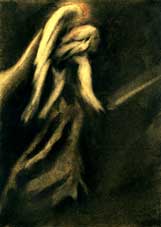 |
The Guardian Demons series?
Often my titles play off a verse. In this case it was Keats’s
‘my demon, Poesy’ (‘Ode on Indolence’) that
sparked the idea of titling the series Guardian Demons. What
a threesome he creates with Love, Ambition, Poesy! Guardian Demons,
it goes without saying, echoes Guardian Angel. The word ‘demon’
is fascinating for its radical change in meaning over the centuries:
from its Greek root daimon ‘deity, genius’, to
the darker Latin daemonium, meaning ‘lesser of evil spirit’,
on to the rather generic and still familiar century-long use, ‘an
evil spirit or devil’, and that other parallel modern usage, trivialised,
certainly, but in some ways closer to the ancient Greek root, where
we can fondly say about an energetic child, ‘what a little demon!’
or even compliment someone on being a ‘demon cook’! Poets
often call back the root meanings of words, and I like how the original
Greek meaning of ‘demon’ works for the series in one way
and also the energy that the other meanings of ‘demon’ give
to ‘guardian’. Finally, think of Keats being driven by his
beloved demon Poesy!
The mysterious Hyerusch Mirror?
Ah the Hyerusch! Long has it captured my imagination with its unexplained
presence in the half-forgotten house, and the strange flames rising
from its cold mirrored surface. Here again the image comes from a poet,
in this case a short prose piece by Gianfranco Palmery. Does the Hyerusch
really exist? Is it an image from the other world, the one of dreams?
A metaphor of creative passion? All of these things together?
Many of your works have double names, Window-Mirror,
the Fire-Flower series, etc. Duality, as I’ve
said, is a central theme, but sometimes arrives on its own accord. In
Window-Mirror, I was interested in the view from a high rise
window and set out to do a simple exterior view. When I finished, I
looked at the work and was surprised to see an interior with a sort
of chair in front of a mirror emerge. And how symbolic to have the window
coincide with the mirror! Aren’t windows and mirrors really the
two main paths of knowledge? One needs the window, needs to interact
with the outside world, but just as important is to look deep inside
oneself, in the mirror if you will. True knowledge could be thought
of as an intersection of these two moments.
I see you have illustrated many books of poetry. It is true, I’ve
done many books, and book covers, most of them for poetry, but illustration
isn’t exactly the right word. Rather, as in this exhibit, it is
more finding a common spirit, points of contact. In fact, while I have
long known Keats’s poetry, even assisted in translating it, all
the works were done independently. However, often a few lines, like
those of Keats that I’ve used for this show, resound in my mind,
so there are also connections of which I am not consciously aware.
What are the points of contact for your Flower
series published in Amore e fama, translations of Keats’s
poems? Here we return in a literal sense to The Poet’s
Room. As Keats lay dying, among his few comforts were the large
white flowers with golden centers painted on his bedroom’s sky-blue
ceiling and his thought of the violets in the cemetery that he already
seemed to feel growing over him—unforgettable. Keats’s poetry,
of course, has many images of nature and flowers and the forget-me-not,
that together with the blue bell and the violet, is in the famous sonnet
in defense of blue, certainly has some relation to the flower that blooms
on the cover of Amore e fama.
|
Sprite of Fire, I follow thee John Keats, ‘Song of Four Fairies’
Fire I, Acrylic, 30 x 31 cm © 1998 by Nancy Watkins |
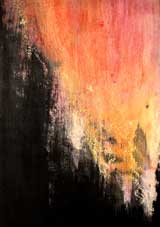 |
The last series of paintings in the exhibit is the one of Fires. Talk about transformation... I love to follow the alchemy of heat with its corresponding gradations of intensity and hue, and mutation almost complete—the deep red-trimmed black suddenly mellowing into a shimmering, and, an instant later, dull, grey ash—but still retaining for a moment more, that shadow memory of the original object. I have painted various series of Fires in their different moods: raging hot or slow burn, sparking with flashes of light, vertical or horizontal flames, fires as if from nature, from human-made objects, theatrical fires. I was delighted how precisely Keats’s ‘Sprite of Fire’ (‘Song of Four Fairies’) reflects their blazing light.
|
Nancy Watkins
|
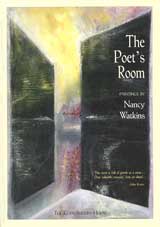 |
To contact this author: autori![]() labirintolibri.com
labirintolibri.com

